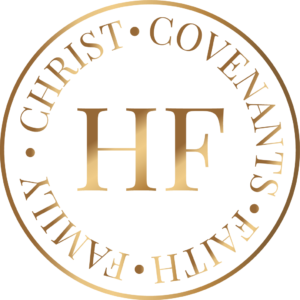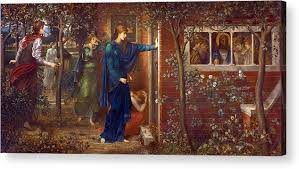In tribute to Joseph Smith and his birth 210 years ago.
Wandering through the Sacred Grove, my 15-year-old mind tried to absorb the First Vision experienced by a boy who was a year younger than me at the time. Sitting atop the Hill Cumorah (in Palmyra, New York) a few hours later, I marveled how Joseph Smith translated the gold plates into the Book of Mormon and organized The Church of Jesus Christ of Latter-day Saints despite horrendous obstacles and persecution. Touring Carthage Jail and standing in the room where the Prophet was killed, I felt immense respect and gratitude for his role in the Restoration. And, in his willingness to die for it. As a teenager contemplating these events, my burgeoning testimony burned brighter. A year later, at age sixteen, I read the Book of Mormon from cover to cover for the first time. Consequently, my growing faith morphed into a sure knowledge of Joseph Smith’s divine commission.
Dear readers, walk with me down memory lane to revisit some of the Latter-day Saint Church’s sacred historical sites on America’s east coast, and how they looked in 1973. Back then, many of the sites were rustic and difficult to find. They were not yet full-blown tourist sites.
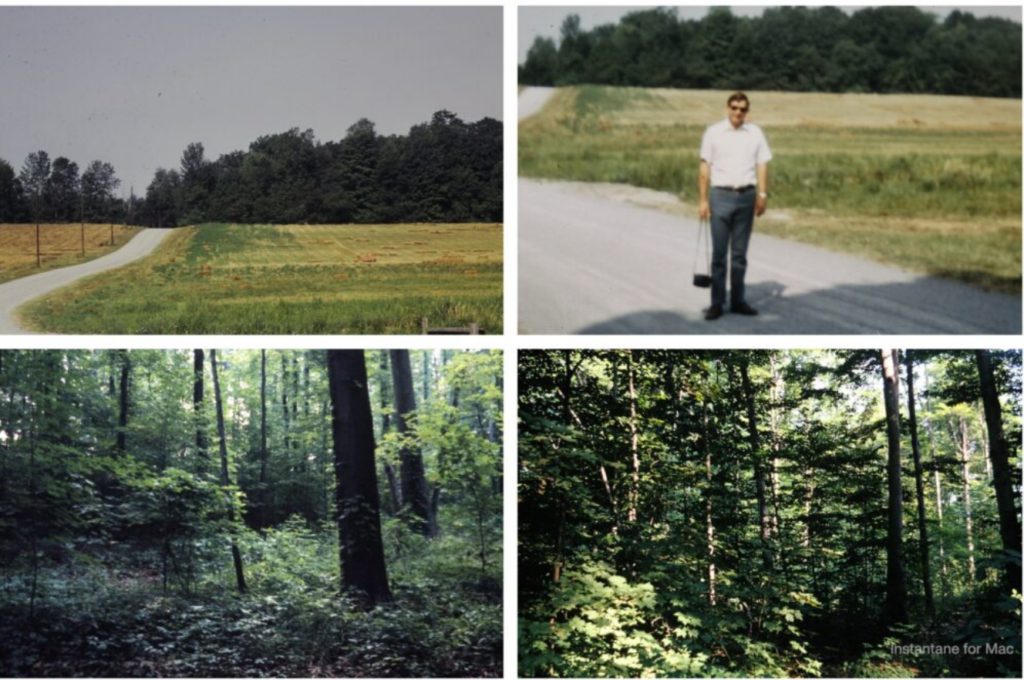
Above photos: 1973. My dad is pictured standing on the dirt road that leads to the Sacred Grove in Palmyra, New York. The other two photos were taken inside of the Sacred Grove.
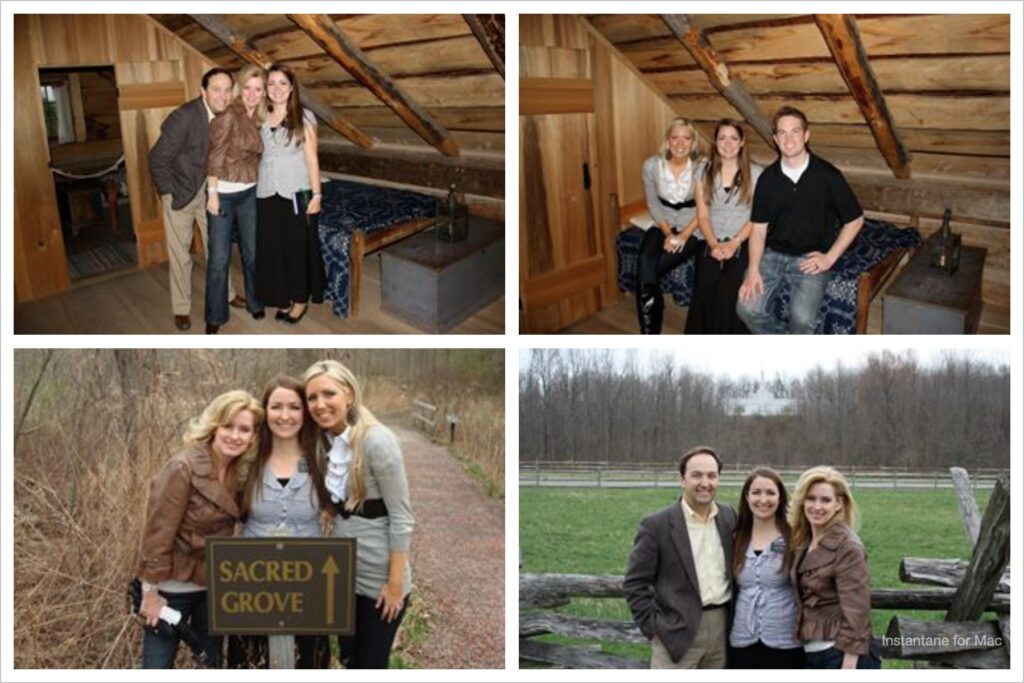
Above photos: 2008: My husband, Rick, my daughter, Cristi, and her husband, Zach, flew to Rochester, New York to reunite with our other daughter, Erica, at the completion of her mission as a missionary tour guide for The Church of Jesus Christ of Latter-day Saints historical sites. The photos show Joseph’s bedroom where Moroni appeared. Lower right photo: the Smith farm; Palmyra Temple in the background.
My respect for the Prophet continues to grow. So, I must take time from the busyness of this Christmas season to pay tribute to him. Jesus Christ, of course, is the reason for this season, and this post is not meant to diminish the Savior in any way. Still, the Prophet Joseph was born at Christmastime on December 23, 1805; thus, his birthdate is easy to overlook or forget. Last summer, I began reading the first volume of The Joseph Smith Papers. Because of his astounding spiritual intellect, I had forgotten that Joseph Smith had very little secular education. I had never seen his limited writing abilities until I read this book. The purpose for publishing Joseph Smith’s papers is revealed in the book’s preface:
The motivation to engage in this vast project comes from the great respect in which Latter-day Saints hold Joseph Smith as the church’s founder and a modern prophet. We believe Joseph Smith will be better understood and appreciated if the documents he produced are available for all to examine. The documents shed light on many dimensions of Smith’s life and personality, his strengths and weaknesses, and the successes and failures of the movement he led.
The editors have also left the Prophet’s journals with his original writing, spelling, and punctuation intact. Hence, I was taken aback when reading the Prophet’s revelations and correspondence in their unedited form. For instance, here’s his unedited journal entry from April 1, 1834:
Tusday this day at Brother Riders and the Court has not braught on our tryal yet we are ingaged in makeing out some supenies (subpoenas] for witness this Aprel 1st Tusday my Soul delighteth in the Law of the Lord for he forgiveth my sins and will confound mine Enimies the Lord shall destroy him who has lifted his heel against me even that wicked man Docter P Hrlbert [Doctor Philastus Hurlbut] he deliver him to the fowls of heaven and his bones shall be cast to the blast of the wind he lifted his [arm] against the Almity therefore the Lord shall destroy him“
p. 65.
To this day, I am astounded that the Lord was able to work through such a young man who had little worldly education and experience! Reading the Prophet’s rustic writing is further proof of his divine mission. In fact, Joseph Smith exemplifies the kind of people the Lord chooses as His standard bearers. The scriptures (both ancient and modern) describe Christ’s chosen leaders as follows:
Because the foolishness of God is wiser than men; and the weakness of God is stronger than men. For ye see your calling, brethren, how that not many wise men after the flesh, not many mighty, not many noble, are called. But God hath chosen the foolish things of the world to confound the wise; and God hath chosen the weak things of the world to confound the things which are mighty. And base things of the world, and things which are despised, hath God chosen, yea, and things which are not, to bring to naught things that are“
(1 Cor. 1: 25-28).
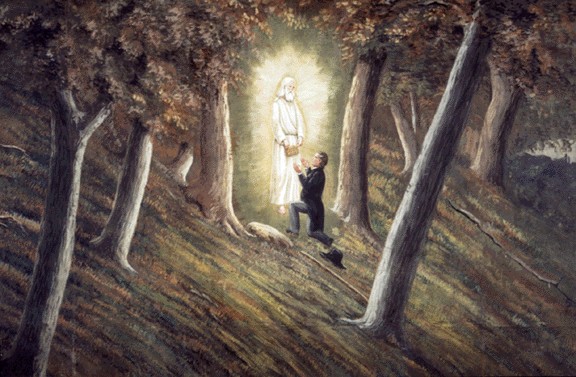
Surely, God is the great qualifier—even in our sins, He qualifies and sanctifies us for His holy purposes. Those whom He calls, He qualifies to do the impossible. And Joseph Smith was living proof of this concept. He did what his critics said (and still say) is not possible:
- He translated the entire Book of Mormon from the gold plates in three short months.
- He translated the Book of Moses and the Book of Abraham from ancient Egyptian scrolls.
- He received revelations in the form of the Doctrine & Covenants.
- He began a re-translation of the New Testament.
- He wrote many correspondences and lectures regarding Church doctrine.
- He restored and organized a church (more like a movement) while in his 20s.
- He planned and built cities and temples.
- He tried to establish Zion and build the New Jerusalem to prepare the Saints for Christ’s second coming.
- He accomplished all of this while often times languishing in jail on trumped-up charges. All before his martyrdom at the young age of 38.
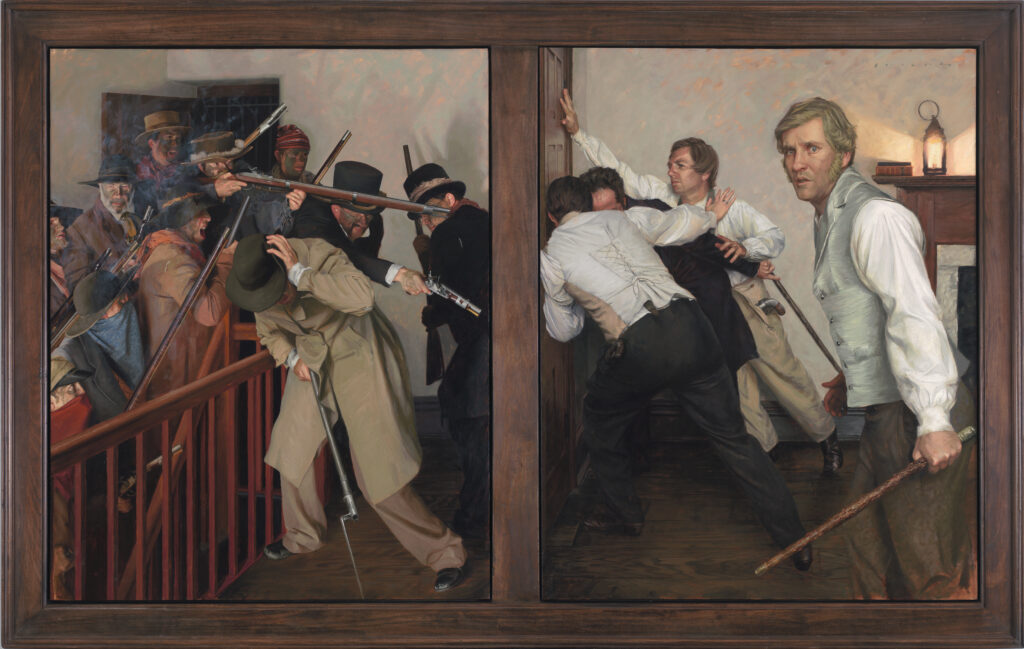
“Greater Love Hath No Man” by Casey Childs
Talk about a miracle! Nothing in Joseph Smith’s worldly upbringing had prepared him for such achievement and artistry. I’m in total agreement when the editors call the Prophet “an untutored genius in all of American history” (General Introduction, Joseph Smith Papers).
I also appreciate the book’s unvarnished look at the Prophet’s challenges and weaknesses. While leading the Church, Joseph engaged in a few fistfights and verbal altercations. One physical fight was with his younger brother in front of their elderly parents, Joseph Sr. and Lucy Mack Smith. Joseph and Emma had many marital difficulties which resulted in heated arguments. Yet, these accounts of an imperfect prophet served to deepen my love and respect for Joseph Smith. I found his frailties endearing. The Prophet’s personal flaws give the rest of us hope—along with a sure knowledge that the Lord does indeed work mighty miracles through fallible humans. I shall forever “praise to the man who communed with Jehovah; honor and blessed be his ever great name.”
Since my first visit in 1973, I have repeatedly returned to the hallowed places of the Restoration with my husband and children. In 1998 and in 2001, Rick and I took our kids across the country to see the American historical sites along with all the Church historical sites. As previously mentioned, Rick and I flew back east in 2010, to pick up our missionary daughter, Erica, at the close of her mission. We loved getting personal tours of these sacred sites from our missionary daughter.
While touring, I was heartened and a bit saddened at the development of the sites over the years. Though more “user friendly” to visitors, the sites now had a “touristy” feel and polished ambiance. The Sacred Grove had become crowded with people, and the grounds were trimmed, orderly, and neatly marked with paved pathways. The Hill Cumorah had “suffered” the same “fate.” Still, I felt gratified that the Church has increased monies to develop these areas as clear living descriptions and testaments of the Restoration. (Update: The Church has discontinued the Hill Cumorah pageants and is now in the process of restoring the Hill Cumorah to its original state.)
And the Spirit still burns as brightly in every place. I liken these sacred places on the East Coast to the sacred places in the Holy Land.
President Gordon B. Hinckley succinctly summarizes my feeling regarding Joseph Smith’s mission. He says,
You and I are faced with the stark question of accepting the truth of the First Vision and that which followed it. On the question of its reality lies the very validity of this Church“
“The Stone Cut Out of the Mountain,” Ensign, November 2007, p. 86.
Our whole strength rests on the validity of that vision. It either occurred or it did not occur. If it did not, then this work is a fraud… upon that unique and wonderful experience stands the validity of this church“
“The Marvelous Foundation of Our Faith,” Ensign, November, 2002, p. 80.
That becomes the hinge pin on which this whole cause turns. If the First Vision was true, if it actually happened, then the Book of Mormon is true. Then we have the priesthood. Then we have the Church organization and all of the other keys and blessings of authority which we say we have. If the First Vision did not occur, then we are involved in a great sham. It is just that simple“
Teachings of Gordon B. Hinckley, p. 227.
There is no middle ground. Joseph Smith talked with the Father and the Son or he didn’t. If he didn’t, then we are embraced in a great fraud, a terrible fraud“
Counsel From the Prophet,” Church News, April 4, 1997, para. 4.
I add my testimony to President Hinckley’s. It’s either true or it isn’t. And, surely, it is true. My testimony of the Prophet Joseph Smith stands firm as the Church comes under increasing scrutiny and criticism for its “unpopular” societal stances—along with increased condemnation and claims of Joseph Smith as a “false prophet.” Regardless, I owe my priceless blessings of the Restoration to this extraordinary man.
Happy birthday, Joseph Smith! And Merry Christmas!
Julie
